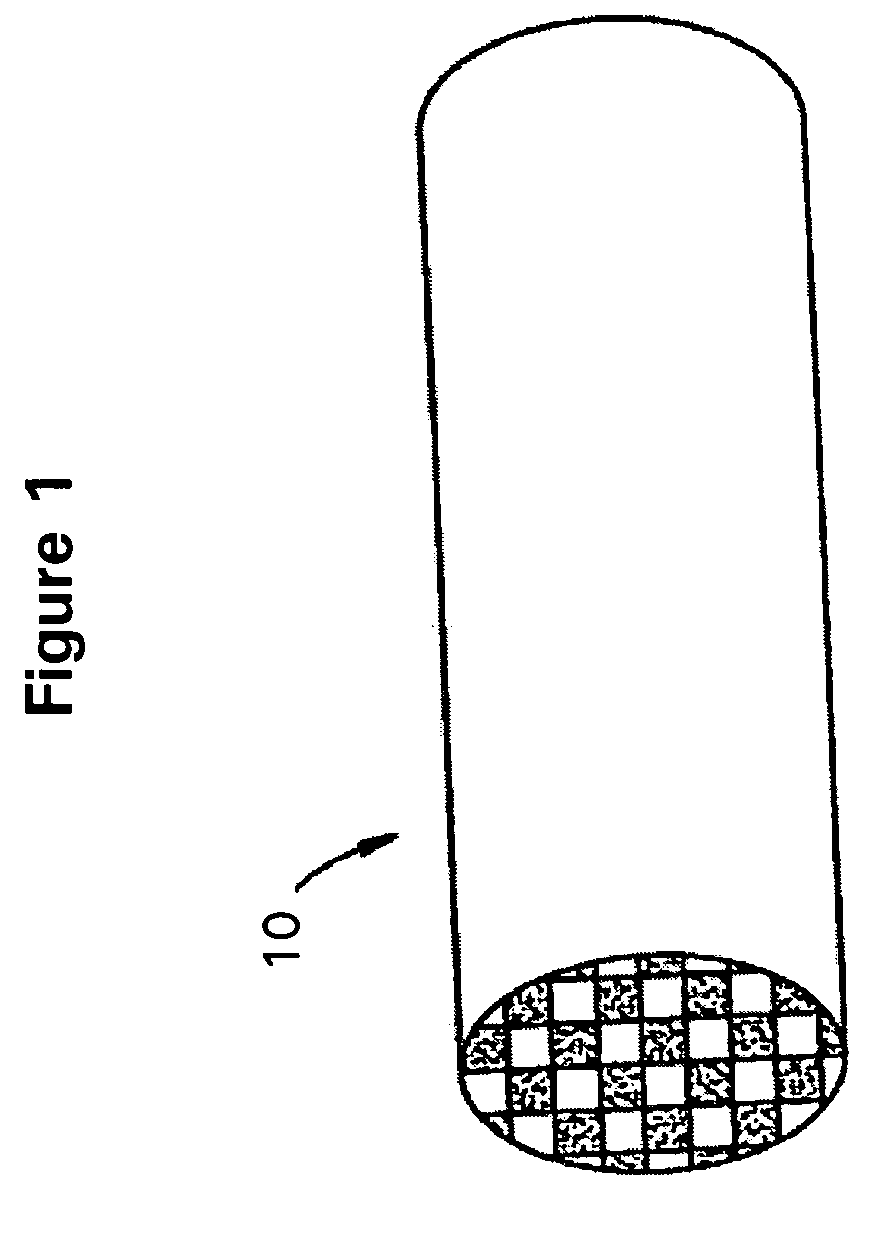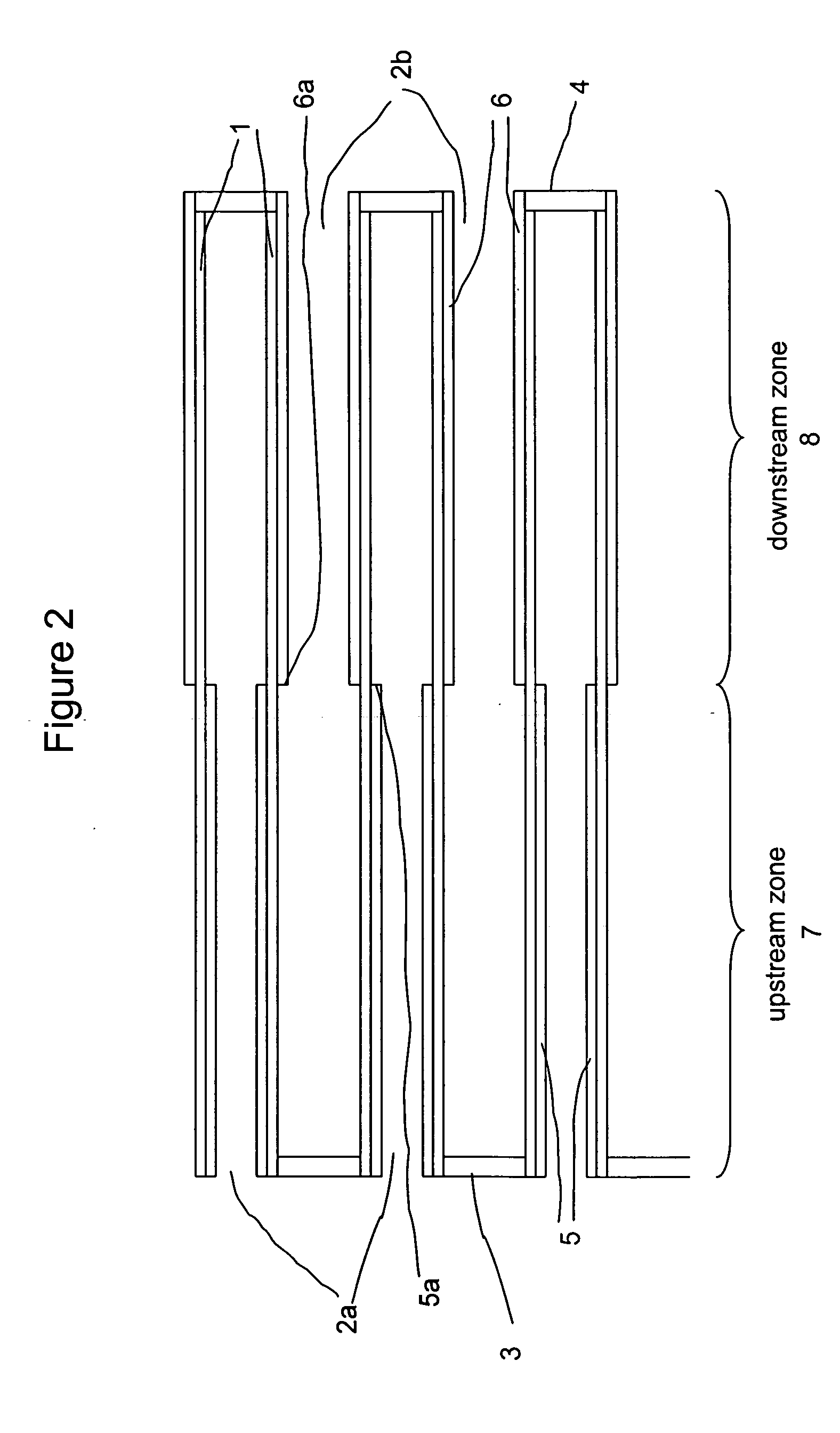Pressure-balanced, catalyzed soot filter
a filter and pressure-balance technology, applied in the field of catalyst articles, can solve the problems of shortening the useful life of catalyst compositions coated along the length of the substrate, limiting the useful life of the entire catalyst-coated wall flow substrate, and high material costs associated with platinum group metal-containing compositions, so as to reduce overall platinum group metal component material costs and reduce exhaust gas pollutants
- Summary
- Abstract
- Description
- Claims
- Application Information
AI Technical Summary
Benefits of technology
Problems solved by technology
Method used
Image
Examples
example 1
Homogeneous Catalyst Coating: Reference Catalyst A
[0112] This catalyst composition was coated on a silicon carbide filter used with the intention to trap particulate matter (soot) and abate the residual hydrocarbon and CO generated in the diesel exhaust during combustion.
[0113] This catalyst coating was made by impregnating 313 g of a solution of amine-solubilized platinum hydroxide (about 17% Pt) onto 546 g of 1.5% silica alumina support (120 m2 / g) followed by fixing the Pt using acetic acid solution. This material made into a slurry of about 40% solid then milled to a particle size less than 8 microns. After milling, 1100 g of CeO2—Pr6O11—ZrO2 composite (containing 30 wt. % ceria, 10 wt. % praeseodymia, and 60 wt. % zirconia) was added to the slurry followed by zirconyl acetate (296 g at 30% ZrO2) and milled further to less than 5 microns. The slurry was then diluted to about 30% solid. The slurry was used to coat one of the walls of a silicon carbide wall flow filter substrate ...
example 2
Catalyst B
[0114] This soot filter had the coating design as shown in FIG. 3, and had a first inlet coating, a second inlet coating and an outlet coating.
[0115] The slurries for each of the coatings were prepared identically except for the differing concentrations of platinum and different solids content. The platinum concentrations and the solids content were adjusted to achieve the target washcoat loading for each coating. The slurries were made by impregnating the Pt salt solution onto gamma-alumina. Acetic acid was used to precipitate the Pt. The impregnated alumina was made into a slurry about 40% solids by adding water and some acetic acid. Zirconium acetate was added and the slurry was milled to an average particle size less than 5 microns. Three slurries were made based on the above procedure and each slurry was coated in the following order:
[0116] Second Inlet Coating: 100% of the inlet of the filter was coated to give a washcoat loading based on calcined weight of about ...
example 3
Catalyst C
[0120] This soot filter had the coating design as shown in FIG. 3, and had a first inlet coating and an outlet coating.
[0121] The slurries for each of the coatings were prepared identically except for the differing concentrations of platinum and different solids content. The platinum concentrations and the solids content were adjusted to achieve the target washcoat loading for each coating. The slurries were made by impregnating the Pt salt solution onto gamma-alumina. Acetic acid was used to precipitate the Pt. The impregnated alumina was made into a slurry about 40% solids by adding water and acetic acid. Zirconium acetate was added and the slurry was milled to an average particle size less than 5 microns. Two slurries were made based on the above procedure and each slurry was coated in the following order:
[0122] First Inlet Coating: 50% of the inlet of the filter was coated to give a washcoat loading based on calcined weight of about 0.6 g / in3, a zirconia concentrati...
PUM
| Property | Measurement | Unit |
|---|---|---|
| Fraction | aaaaa | aaaaa |
| Fraction | aaaaa | aaaaa |
| Fraction | aaaaa | aaaaa |
Abstract
Description
Claims
Application Information
 Login to View More
Login to View More - R&D
- Intellectual Property
- Life Sciences
- Materials
- Tech Scout
- Unparalleled Data Quality
- Higher Quality Content
- 60% Fewer Hallucinations
Browse by: Latest US Patents, China's latest patents, Technical Efficacy Thesaurus, Application Domain, Technology Topic, Popular Technical Reports.
© 2025 PatSnap. All rights reserved.Legal|Privacy policy|Modern Slavery Act Transparency Statement|Sitemap|About US| Contact US: help@patsnap.com



